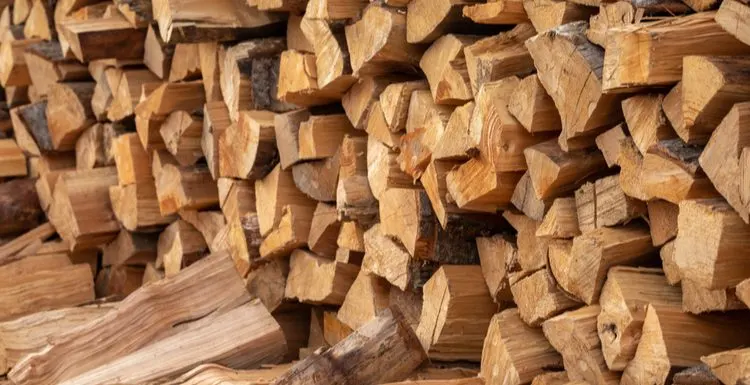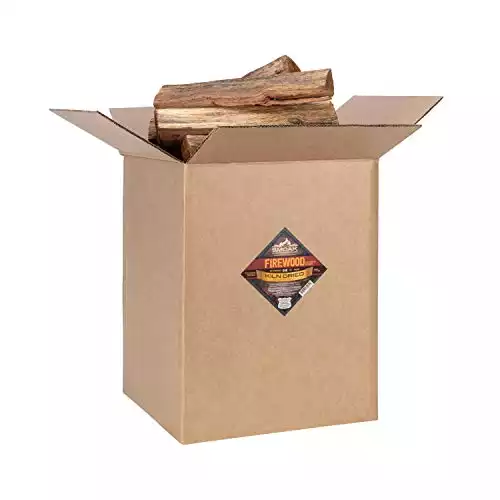If you’re going camping, stocking up on winter supplies, or just want to learn something, you might be wondering what a cord of wood is. In any case, you’re in the right place. Read on to learn all you need to know.
If you’re looking to indulge in a summer campfire and are shopping for firewood, you might be asking yourself, What is a cord of wood?
With measurements ranging from a full cord to a half cord to a face cord, it can be tricky to understand what amount of wood is perfect for you.
A cord of wood is the metric used to measure stacked firewood. A full cord of wood is an area that is four feet tall, eight feet wide, and four feet deep, filled with stacked firewood. Usually, this equals 128 cubic feet and weighs up to 5,000 pounds.
Cord of Wood Explained
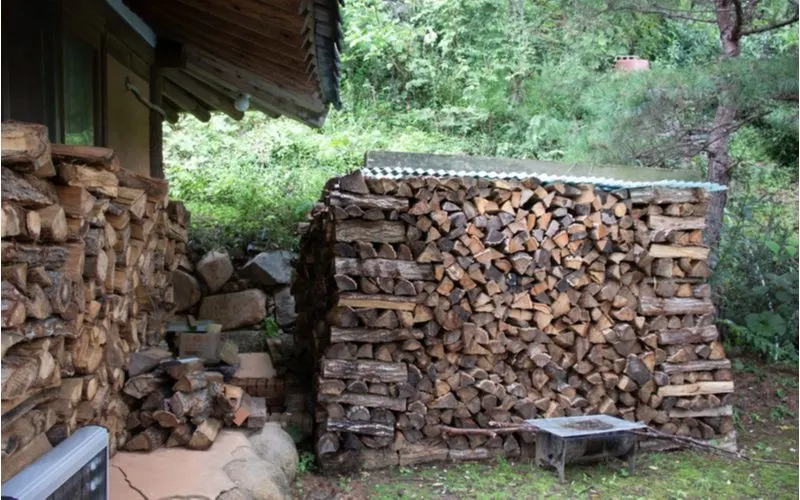
Minus Lab/Shutterstock
Even though a cord of wood is a standard metric for calculating firewood volume, there is rarely a need for so much chopped wood.
Since it’s difficult to measure the exact volume of a cord, it’s essential to know not only how to visually identify a cord but also the other ways to measure out your firewood.
Why Is It Called a Cord?
In the early 1600s, the measurement of a “cord” became the established standard. Vendors used this term because they would use cords to tie logs in a bundle.
Even though the amount of firewood has changed, this metric has held strong over the years as the standard.
Are There Other Ways to Measure Wood?
While a cord might be the common standard, it is way more firewood than a person will typically need. For this reason, there are some other ways to define the amount of wood you need.
- Half Cord: This is equivalent to the amount of wood it takes to fill an area four feet wide, four feet tall, and four feet deep.
- Face Cord (or rick of firewood): This is the common name for a third of a cord. The firewood in this measurement fills an area that is four feet tall, eight feet wide, and 16 inches deep.
- Quarter Cord: In this measurement, the wood fills a space equal to four feet tall, six feet wide, and 16 inches deep. The quarter cord is a popular quantity since firewood racks and holders can house this amount of wood.
How Much is a Cord of Wood?
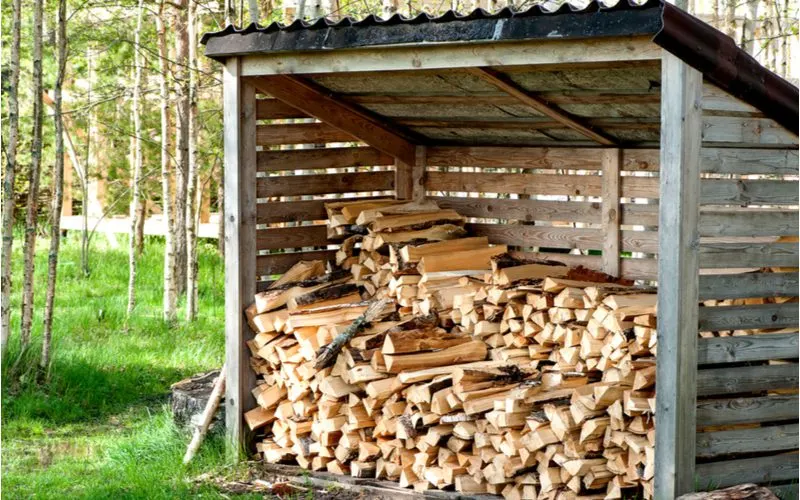
Gorwol/Shutterstock
While many factors can change the price, the average cost of a cord of wood is about $300.
However, depending on the time of year, the type of wood, and the cut, the price can greatly vary. For example, oak is a common firewood type, and it can run as low as $180 for a cord.
But certain types of wood, like mesquite, can cost between $300 and $600. Then, high-quality wood from a tree like a southern cherry fruitwood can cost around $900 per cord. Where you purchase your wood can make the price jump as well.
Places like Delaware and Michigan have relatively inexpensive cords, starting at $120. But, in states like California and Florida, a cord can start at around $350.
Also, be prepared if you’re buying in the winter to pay almost double for wood in the warmer months. So, look for deals in early spring to beat the demand spike!
Can You Cut Your Own Firewood?
The short answer is yes, if it is on your property! If you have the proper equipment and tools, you can cut costs and cut some trees. The first thing you should do if you want to cut your wood is measure your dimensions.
Fewer things are more frustrating than working hard and the wood not fitting. So, it’s always wise to make sure your firewood will fit in your fireplace or stove. Next, you should be sure that you’re cutting your wood at the right time of year.
Wood burns best when dried or seasoned, so cutting early and letting the wood dry is essential for a useful heat source.
Finally, assess the number of trees you have to work with. If you have more than enough trees to make a cord or the amount of wood you need, then you’re set.
However, if you don’t have as many trees on your property as you need, you need to get permits.
Since firewood is a primary source of heat and energy for some people, the USDA will typically allow tree cutting in national forests, but you will need a permit.
Are There Other Ways to Save?
There are a few out-of-the-box ways to save money on firewood. Sometimes, local arborists, tree-trimming companies, and even construction crews will have wood that they want to get rid of.
Another great way to get free wood is to talk with the people who clean up after big storms. Most times, people prefer to recycle their unused wood rather than throwing it away.
Things You Need To Consider
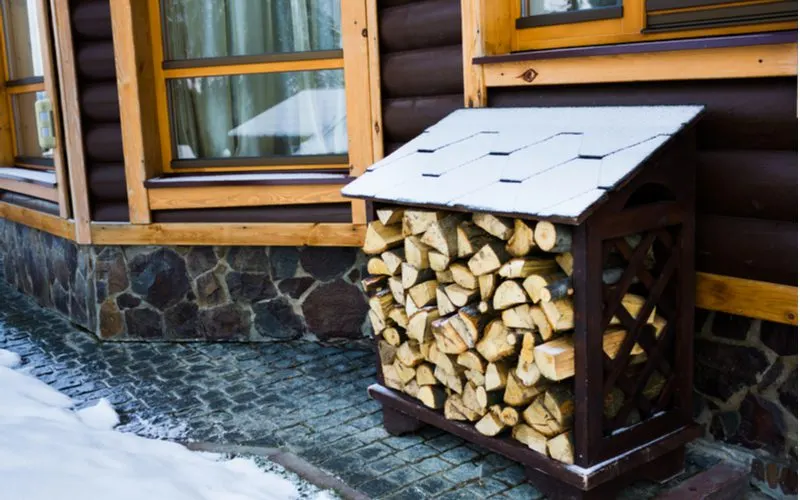
MilkaRe Production/Shutterstock
We now have a better understanding of what a cord of wood is, but there are many more factors that go into buying the best firewood for you.
How long does a cord of wood last?
If a fire is the primary heat source for your home, then a cord will typically last about six to ten weeks during the winter season.
However, this is a rough estimate since so many factors like house size, insulation, location, and even the type of wood stove you use.
Should firewood be seasoned?
Absolutely. Seasoned is another way of saying “dry”. If you want firewood to burn effectively, it needs to dry for at least six months before burning it.
Burning wood without seasoning can result in more smoke and more soot in your chimney.
What is the best way to store firewood?
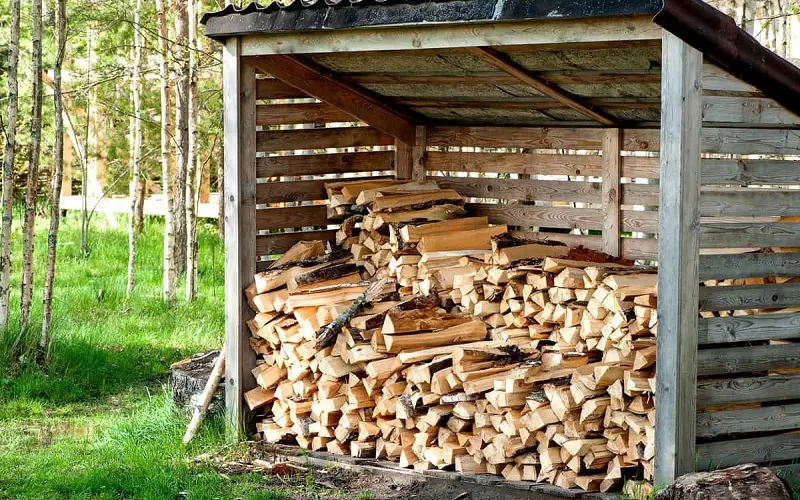
gorwol/Shutterstock
Properly storing wood is the best way to make sure the firewood stays seasoned.
This storage requires a space that is away from any soil but exposed to sunlight and air. It’s a good idea to cover the wood with a tarp or plastic to keep moisture out.
Also, you should never store wood against your home, shed, or garage since this can invite unwanted pests, like termites, into your woodpile.
Stacked firewood near your home can also encourage other pests with a direct, safe route into your house.
What are the best ways to haul a cord of wood?
Depending on things like moisture or the type of wood, a cord can weigh up to 5,000 pounds, so transporting a cord can prove to be a chore. The easiest and most reliable way to transport this much weight is a pull-behind or dump trailer.
These trailers can handle a cord without damage or strain. But, if you don’t have a trailer, it’s not impossible to use a truck to move firewood.
Remember to double-check the truck’s specs to be sure the weight won’t damage it. Generally speaking, modern trucks can haul between 3,000 and 6,000 pounds in the truck bed, depending on their weight class and features.
How long does it take to cut your own cord of wood?
This question is another that has so many variables that it’s hard to give an exact answer. If you’re cutting wood with a splitting maul, then the process could take about six hours or so. This time frame depends on the type of wood and how fast you are at chopping.
Now, if you invest in or have a log splitter, you can speed the process up exponentially and save yourself some labor. Using one of these tools makes it possible to crank out a cord in about one hour.
What is the most common type of firewood?
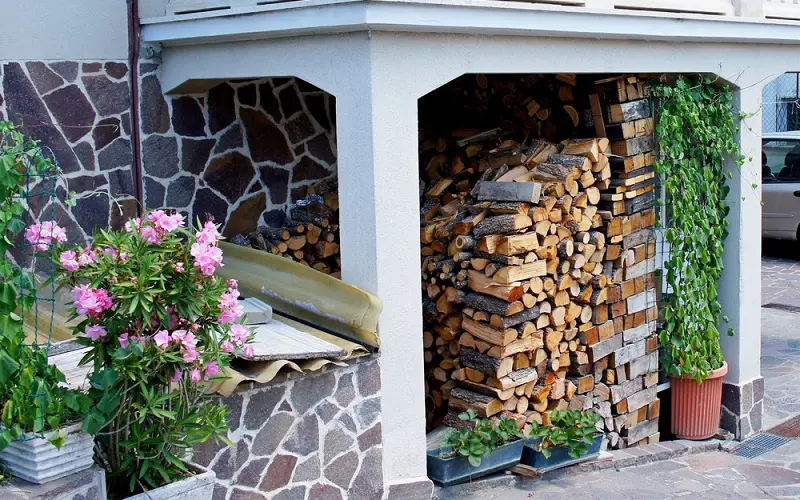
Yulia Khardina/Shutterstock
Oak is the most common. These trees are found in most parts of the country and produce firewood that doesn’t smoke or spark, making it great for burning.
Even though oak is the most common due to its availability, other types of hardwood are strong contenders. Trees like hickory, walnut, cherry, and maple produce slow-burning wood that is great for outdoor or indoor use.
Can you use softwood instead of hardwood?
You can use softwood, but no one recommends it. Softwood’s density and ability to hold in moisture and resins make them difficult to burn. These factors also make them produce a lot of smoke that can cake your chimney in soot.
Are there types of wood that you should not burn?
Yes! Anything poisonous you should never burn. If you burn plants like poison oak, poison sumac, or poison ivy, inhaled smoke can cause severe allergic respiratory issues.
Driftwood can also emit toxic chemicals if it’s burned. The salt embedded in the wood can release toxins comparable to particleboard or wood glue.
Closing Thoughts
Even though the sounds, smells, and concept of fires and firewood are associated with a relaxing time, acquiring firewood can be a daunting task. Even understanding what the true amount of wood is in a cord can be complicated.
With so many factors influencing the cost, weight, and efficiency, it can be downright confusing.
But, with this guide to understanding the many aspects of firewood, you can feel confident in buying or cutting your next round of wood.

